Introduction
The paper featured in this issue is titled Using eye-tracking to identify pedestrians’ critical visual tasks.
This article studies the critical visual tasks of pedestrians, which is the first step in residential road lighting design guidelines. An eye tracker was used to record pedestrians’ visual fixations while walking outdoors during the day and at night, while performing a dual task to better understand which fixations are important. Critical fixations are manifested through slow responses to secondary tasks. This paper was published in 2014 in LIGHTING RESEARCH & TECHNOLOGY.
Original Information
Original Title
Using eye-tracking to identify pedestrians’ critical visual tasks
Published Journal
LIGHTING RESEARCH & TECHNOLOGY
Original Authors
Fotios, S; Uttley, J; Cheal, C; Hara, N.
Paper Interpretation

Abstract
ONE
This article studies the critical visual tasks of pedestrians, which is the first step in residential road lighting design guidelines. An eye tracker was used to record pedestrians’ visual fixations while walking outdoors during the day and at night, while performing a dual task to better understand which fixations are important. Critical fixations are manifested through slow responses to secondary tasks. Among these, the path and pedestrians are the most frequently observed categories, with people more often observing distant pedestrians while focusing on nearby paths. Compared to daytime, roads are more frequently observed at night, while other pedestrians are less frequently observed.

Research Background, Questions, and Current Status
TWO
Research Background
The BSEN13201-2:2003 issued by the UK provides recommended road illuminance; however, these recommendations are based on experience and national practices. Without proper road lighting, we may not provide sufficient light for pedestrians to perform basic visual tasks, or we may provide excessive light and waste energy. Therefore, a reevaluation of the recommended illuminance is necessary.
Research Questions
Current Research Status
So far, most eye-tracking studies have been conducted in controlled laboratory environments. Even when experiments are conducted in real environments, few studies compare the variations in visual attention between day and night, and the relationship between eye movements and attention is not clear.

Experimental Design
THREE
This article uses an eye tracker to record pedestrians’ visual attention during the day and at night, while performing an auditory response task, analyzing the eye tracker output as reaction times increase to determine the critical visual attention points of pedestrians.
The experimental steps are as follows:
1. Experimental Personnel
40 participants (with normal hearing, vision, or corrected vision), effective experimental number 28.
2. Experimental Equipment
Eye tracker (iView X HED), gaze tracking helmet, laptop, Arduino microcontroller (connected to a mini speaker and response button)
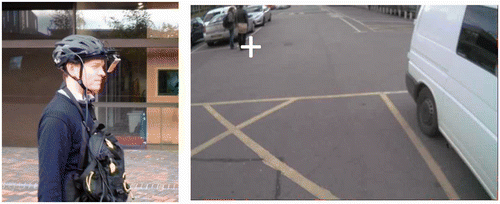
Figure 1: iView X HED mobile eye-tracking system (left) and a screenshot of the recorded video (right), with a white cursor indicating the current fixation point
3. Experimental Time
Daytime: 08:00 to 16:00; Nighttime: 17:00 to 20:00
4. Experimental Location
A section of road around the University of Sheffield, consisting of four parts A, B, C, and D, each with different road conditions.
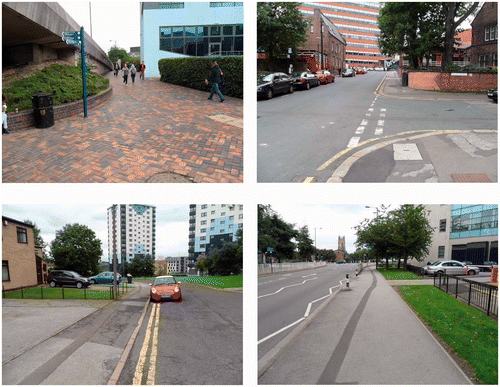
Figure 2: Photographs of the route sections. (From the upper left, clockwise A, B, C, D)
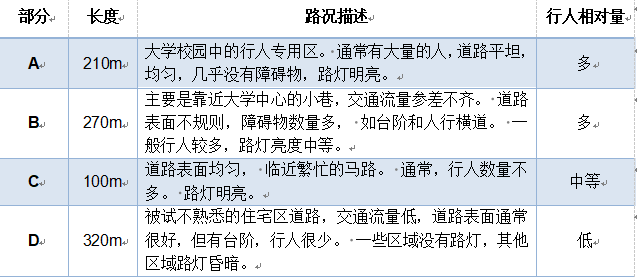
Table 1: Description of road conditions
5. Experimental Procedure
Participants wore the eye tracker to walk a short route during the day and at night, pressing a button after each auditory stimulus (randomly appearing within 1-3 seconds) to perform the dual task.
(1) Before the experiment:
a. Participants practiced responding to auditory stimuli to adapt to the dual task;
b. Completed eye-tracking calibration procedure;
c. Read task instructions (to reduce distraction);
(2) During the experiment:
a. At the start, participants held the response button in front of the camera on the helmet and pressed it five times to provide a starting time point;
b. At the beginning of each section of the route, participants described that section of the route and provided a route diagram.
(3) After the experiment:
Researchers determined the focus objects by reviewing video recordings and categorizing them; interviewed participants about their eye movements; excluded invalid experiments.
6. Focus Categories
Eight categories of fixation objects were created, along with an “unknown” group, totaling nine groups. (Due to poor quality of the eye tracker, it was not possible to identify the fixation objects or the fixation position not being on the screen).
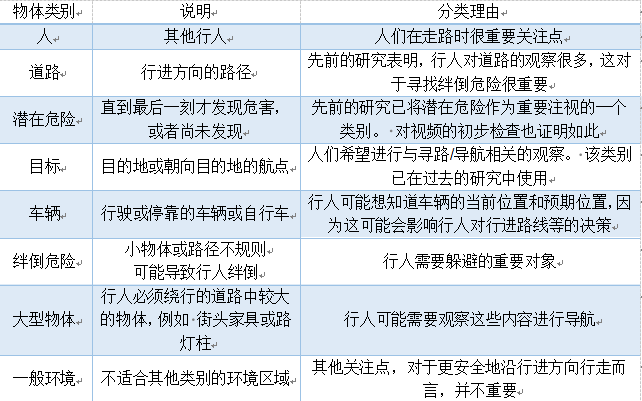
Table 2: Description of important observations

Results Analysis
FOUR
1. Reaction Time
All auditory stimulus reaction times were recorded, with the total average reaction time (MRT) during the day and night being 347 milliseconds (variance of 83ms), with no significant differences confirmed by t-tests (t(38)=-0.015, p>0.05 and t(38)=0.126, p>0.05). METs varied across the four sections of the route, confirmed by ANOVA (F(3,117)=6.74, p=0.001), with section C’s MRT (323 ms) significantly shorter than sections A and D (both at 349 ms), but no difference compared to section B (340 ms).
2. Important Observations
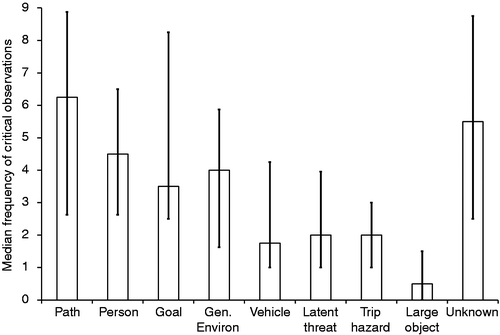
Figure 1a
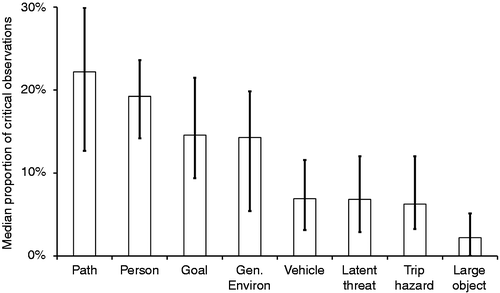
Figure 1b
Figure 1a) Median frequency of important observations in each observation category during day and night trials
Figure 1b) Median proportion of important observations in each category during day and night trials
(Note: Error bars show interquartile ranges)
Figure 1b) shows the median proportions of important observations in each category for the remaining 28 participants (in the day and night trials). Among them, the observation proportions for paths and people are higher, while the large object category is lower. A significant change compared to Figure 1a) is that the people category shows higher importance.
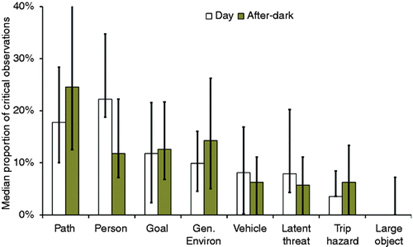
Figure 2: Proportion of key observation results in each category during day and night trials
From Figure 2, it can be seen that the proportion of fixating on paths is greater at night than during the day, while the proportion of people is smaller. The Wilcoxon test indicates that the differences in the people and path categories between day and night are significant at p=0.034 and p=0.067 levels, respectively, indicating a significant difference, while the differences for the other six categories are not significant (p-values range from 0.143 to 0.849).
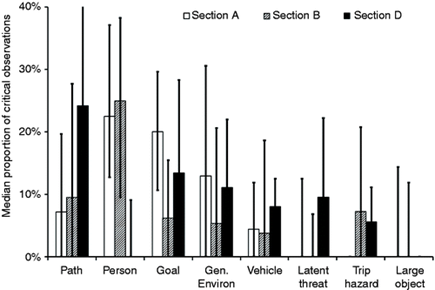
Figure 3: Median proportions of observations in each category under daytime and nighttime conditions (Note: Error bars show interquartile ranges)
Comparing the important observation proportions in each category in sections A, B, and D, excluding section C (which has a low number of important observations), as shown in Figure 4, section D has a higher observation proportion on paths compared to sections A and B; section A has a lower observation proportion in the “trip hazard” category. The observation proportion in the “target” category is lower in section B.
3. Path and People – Distance Analysis (Comparing by Distance Group)
Items fixated within 4m of participants were deemed nearby items. The trip hazard category is included in the path category.
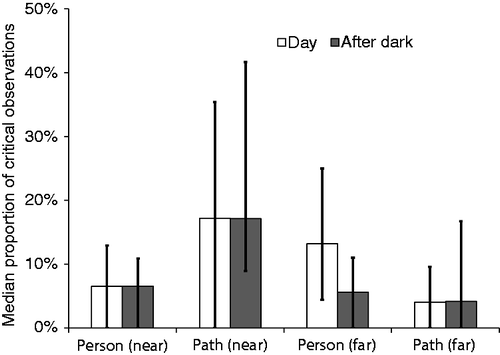
Figure 4: Median proportions of key observation values in “people”, “paths”, and other categories under daytime and nighttime conditions, grouped by near and far (Note: Error bars show interquartile ranges)
Compared to road conditions at a distance, the proportion of observations on nearby road conditions is higher. People tend to observe distant pedestrians compared to nearby pedestrians; the proportion of observing distant pedestrians is higher during the day than at night (median of 13.2% during the day, median of 5.6% at night, T=9.5, p=0.006). Comparisons of other near and far categories between day and night are not statistically significant.

Discussion
FIVE
The purpose of this article is to identify the critical visual tasks of pedestrians when walking at night, allowing for the assessment of how lighting characteristics (such as illuminance and spectrum) affect these tasks. The results indicate that paths and other pedestrians are more frequently observed, with a tendency to observe distant pedestrians while fixating on nearby paths. At night, the frequency of fixations on others is lower than during the day, which may be due to the reduced number of pedestrians. For paths, the observation frequency at night is higher than during the day, which may indicate an increased need to identify uneven surfaces after dark.
In the current study, different path sections were selected, and the results indicate significant differences between the tested routes. For example, area A has a relatively flat terrain with many pedestrians, resulting in a higher observation proportion for people compared to paths, while the observation proportion for the road is significantly lower. These differences between route sections suggest that if pedestrians walk on roads with varying environmental characteristics, their critical visual tasks may change.

Conclusion
SIX
It is important for lighting design to consider the visibility of people and paths. For paths, there is a tendency to observe nearby road conditions (less than about 4m); for people, there is a tendency to observe distant pedestrians.

Citation
S Fotios, J Uttley, C Cheal, et al. Using eye-tracking to identify pedestrians’ critical visual tasks, Part 1. Dual task approach. 2015, 47(2):133-148.
End
Content Source: Zhang Mengjie
Editor for this Issue: Xue Pengdong
Proofreader: Fu Hanliang
Reviewer: Hou Caixia

Long press to identify the QR code to follow us
🔗Previous Recommendations




★Bilibili | Xi’an University of Architecture and Technology Management
★Douyin| Xi’an University of Architecture and Technology Management ★WeChat| Xi’an University of Architecture and Technology Management
★Weibo| School of Management, Xi’an University of Architecture and Technology

